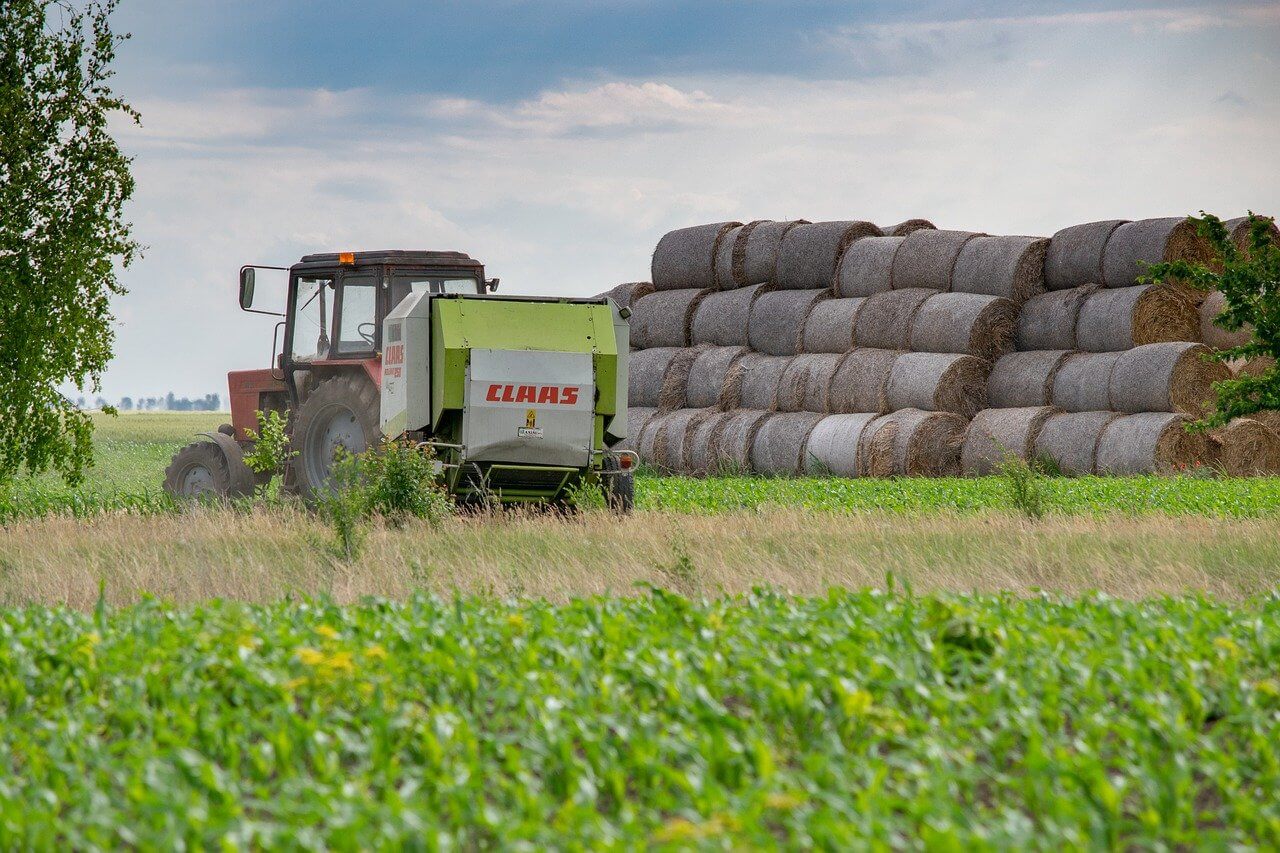A clean hay baler is going to have more uptime, have less propensity to rust, and work more efficiently. However, cleaning a hay baler may seem a bit complicated to those that don’t have experience with baler maintenance. Whether you need to clean off debris from haying, winterize your baler for storage, or simply want to ensure your baler is functional and long-lasting, learning how to clean a hay baler is pretty simple!
What You'll Learn Today
Safety First

Before we talk about what we can do to clean a hay baler, it needs to be mentioned that safety is more important than anything else.
Some obvious rules to follow are to ensure that no power is connected to the baler when you want to clean it and don’t do anything that your owner’s manual tells you not to do!
Sounds simple enough, right?
Cleaning A Hay Baler With Air
Air is your best friend when it comes to cleaning your hay baler. While many people would think of using water right away, there are many stories from farmers that used water on their balers and had rust and bearing issues from doing so. Air can get the job done just as well without moisture issues.
Leaf blowers are a good tool but, for stuck-on debris, an air compressor is the right tool to use. Using forced air like this will easily remove built-up dust, dirt, and debris in each part of the baler.
Just be cautious and wear safety goggles as it never fails to get some debris blown into your face after it flies off the baler from the blown air. Nobody likes dust or a small piece of hay in their eye, I can tell you that much!
Can You Pressure Wash A Hay Baler?
If you can pressure wash your car, you can pressure wash any machine, right? While pressure washing may have its place for deep cleaning projects, it’s best to steer clear of this when cleaning a hay baler.
If you feel the need to use water to clean the exterior of your baler, it’s probably better to use something with less pressure to ensure water doesn’t ricochet into the bearings and chains.
Do you want to replace bearings and chains regularly? If so, pressure washing your baler may be an option. But, most farmers aren’t looking to fork over more money for replacement parts when they could have easily been safe without using water to clean the baler!
Those who are dead-set on using water to clean the hay baler should use the air compressor to dry everything off meticulously.
Don’t Forget To Grease
The bearings and PTO drivelines need to be full of grease to ensure no moisture can collect in the joints. Greasing any bare metal is also a good idea to prevent rust and corrosion.
If you have bare metal that comes in contact with the hay itself, you probably don’t want to use typically grease from the grease gun. That’s not a good feed additive for the livestock.
You can use vegetable shortening in those places as a safe alternative to grease that will keep your hay baler maintained properly without tainting the hay you are making with it!
Why Clean A Hay Baler?
When hay and debris build up in the baling system, there are quite a few issues that can arise:
- Clogs
- Moisture accumulation
- Inefficient operation
- Mice and rat nests
- Hornet’s nests
While clogs shouldn’t be an issue if you are baling the crop at the right moisture content, too much build-up that isn’t cleaned away is bound to cause a clog at some point.
What’s worse is when debris builds up, it can hold moisture and keep it there for longer than it is safe for your hay baler. All of the moving parts of the hay baler should be greased to keep them safe.
Harboring moisture within the machine will allow those water molecules to find their way into crevices and cause rust and corrosion that can be devastating to a hay baler.
If that doesn’t happen, all of that debris within the hay baler can simply cause it to operate less efficiently. It may not pick up hay as well, bale it as fast, or tie/wrap it as well. The window of opportunity to bale great hay is small, so you need your hay baler to be as efficient as possible.
Lastly, if you store your baler away with debris still intact, you have essentially built a vermin condo and have invited mice and/or rats to move in and enjoy the luxury. Grass clippings and hay draw mice like no other and their feces and urine will cause rust and an unpleasant odor.
Obviously, it’s important to keep a hay baler clean!
A Clean Baler Works Best!
Cleaning a hay baler isn’t difficult and it doesn’t take a long time. Simply follow your routine after each use and you will have a clean and efficient hay baler for years to come!
A few minutes of your time to maintain your baler is a better value than buying replacement parts when rust and corrosion set in. Looking for more guidance? Here is our advice on how to sharpen baler knives.